Diamond Cut: Anatomy of a Round Brilliant
January 14, 2016
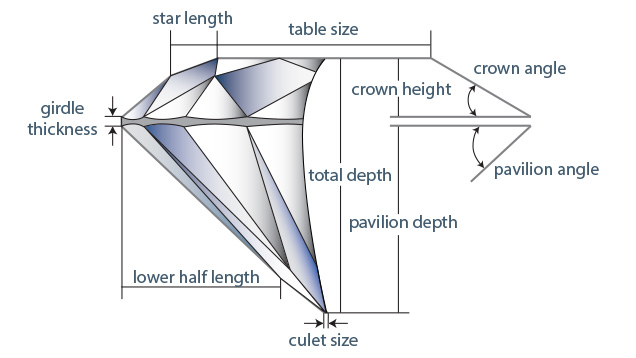
A specific set of terms is used to describe parts of a polished diamond. Each part of a diamond makes its own contribution to the diamond’s appearance.
In the standard round brilliant, there are 57 or 58 facets. The table facet, usually the largest facet on the diamond, helps gather light from above and either reflects it back to the observer or directs it into the diamond’s interior. The crown facets, consisting of 8 bezels, 8 stars, and 16 upper halves, gather and disperse light to create brightness, fire, and a scintillating pattern of light and dark. The pavilion facets, consisting of 16 lower halves, 8 mains, and an optional culet, reflect the light back through the crown to the viewer’s eye. All of these facets work together creating each diamond’s unique appearance.
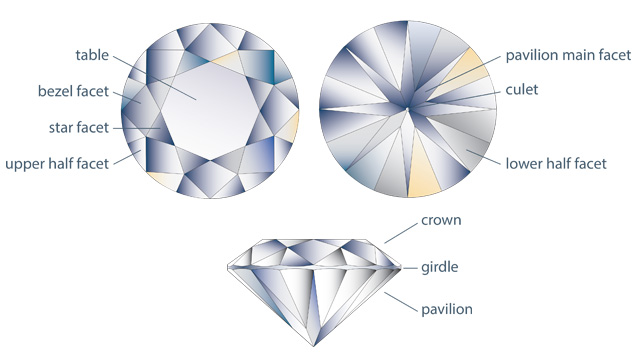
Average Girdle Diameter
The diameter of a round diamond is the distance from one girdle edge to the opposite girdle edge, straight through the center.
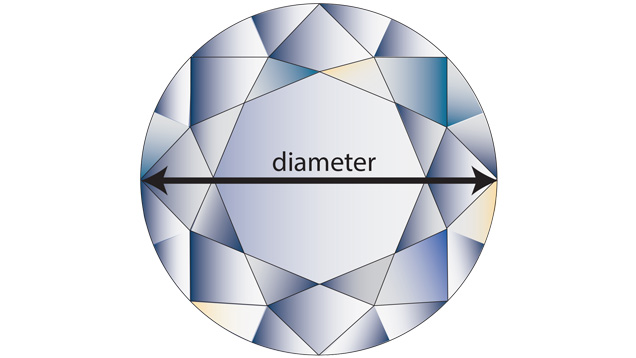
Because even well-cut round diamonds are never perfectly round, the diameter is measured in several places, recording the minimum (smallest) and maximum (largest) measurements.
The average girdle diameter is a calculated value obtained by the following formula, which is then reported to the nearest hundredth of a millimeter (0.01 mm):
Average girdle diameter = (minimum diameter + maximum diameter) ÷ 2
This proportion is used in calculating certain percentages such as table size, total depth, crown height, and pavilion depth.
Total Depth Percentage
The total depth percentage of a round brilliant diamond is the table-to-culet depth, expressed as a percentage of the average girdle diameter and reported to the nearest tenth of a percent (0.1%).
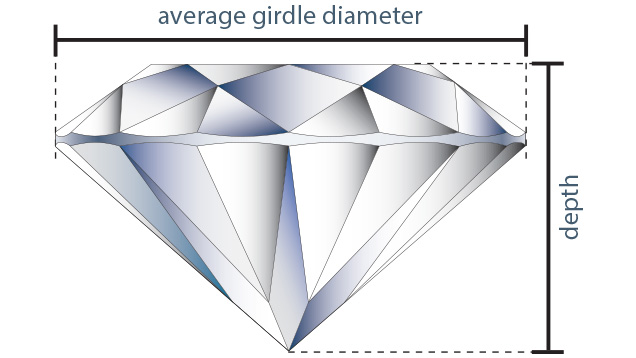
The total depth percentage is a calculated value obtained by the following formula:
Total depth % = (depth ÷ average girdle diameter) x 100
Table Percentage
The table percentage of a round brilliant diamond is the average of four table measurements (from bezel point to bezel point) expressed as a percentage of the average girdle diameter. It is reported to the nearest whole percent (1%).
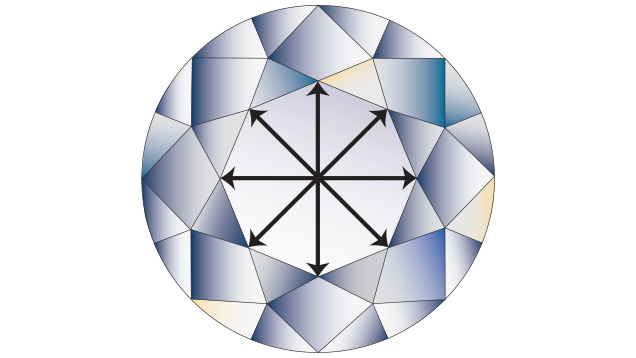

The table percentage is a calculated value obtained by the following formula:
Table % = (average table size ÷ average girdle diameter) x 100
Table size can have a significant impact on the diamond’s face-up appearance, especially when it’s paired with certain combinations of crown and pavilion angles.
Star Length Percentage
Star length percentage is the length of the star facet expressed as a percentage of the girdle-to-table distance. The average of the eight star length percentages is reported to the nearest five percent (5%).
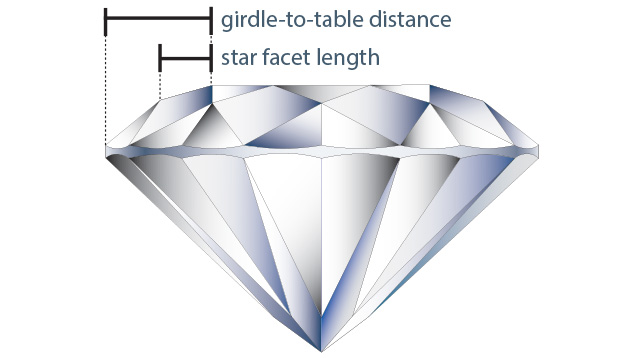
Star facets that are very short or very long can have a negative effect on a diamond’s face-up appearance.
Crown Angle
Crown angle is the measured angle between the bezel facet plane and the table plane. The average of eight crown angle measurements is reported to the nearest half of a degree (0.5°).
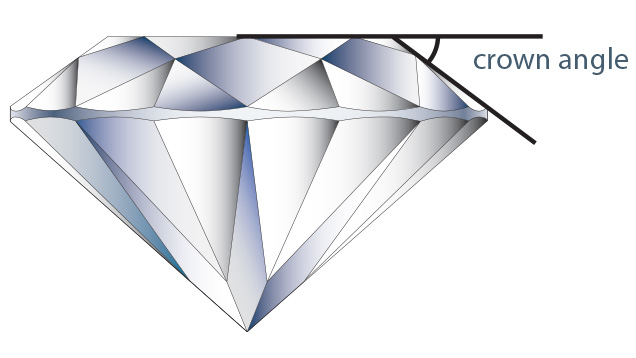
Crown angle can significantly affect a diamond’s face-up appearance. Generally, crown angles from 32 to 36 degrees produce attractive, bright, and fiery diamonds if combined with the right table percentage and pavilion angle.
Crown Height Percentage
Crown height percentage is the diamond’s crown height, measured from the table to the intersection of the bezel facet and the girdle, expressed as a percentage of its average girdle diameter. It is reported to the nearest half of a percent (0.5%).

Crown height percentage is a calculated value obtained by the following formula:
Crown height % = (average crown height ÷ average girdle diameter) x 100
Pavilion Angle
Pavilion angle is the measured angle between the pavilion main facet plane and the table plane. The average of eight pavilion angle measurements is reported to the nearest 0.2 degrees.

Subtle pavilion angle differences can have a significant impact on the diamond’s face-up appearance. For instance, steep pavilion angles can produce dark areas under the diamond’s table.
Pavilion Depth Percentage
Pavilion depth percentage is the diamond’s pavilion depth, measured from the culet to the intersection of the pavilion main facet and the girdle, expressed as a percentage of its average girdle diameter. It is reported to the nearest half of a percent (0.5%).
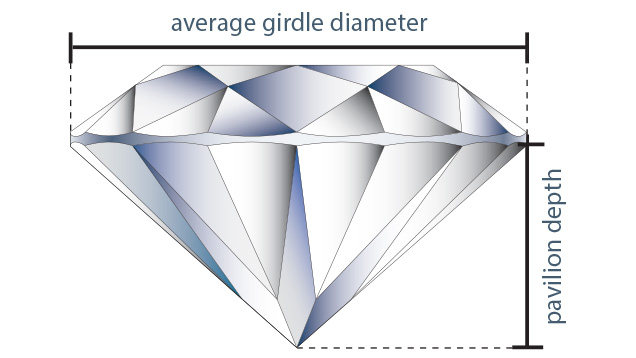
The average pavilion depth percentage is a calculated value obtained by the following formula:
Pavilion depth % = (average pavilion depth ÷ average girdle diameter) x 100
Lower-Half Length Percentage
Lower-half length percentage is the length of a pair of lower-half facets expressed as a percentage of the girdle-to-culet distance. The average of eight lower-half length percentages is reported to the nearest five percent (5%).
Lower-half facets that are very short or very long can have a negative effect on a diamond’s face-up appearance, especially its pattern.
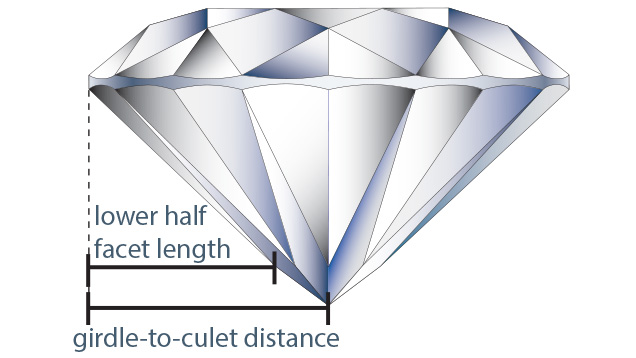
Girdle Thickness Percentage
Girdle thickness percentage is the average thickness of a diamond’s girdle, measured at the eight bezel/main “hill” positions, and expressed as a percentage of average girdle diameter. Hill positions are the “thick places” located where the bezel and main facets meet. It is reported to the nearest half of a percent (0.5%).
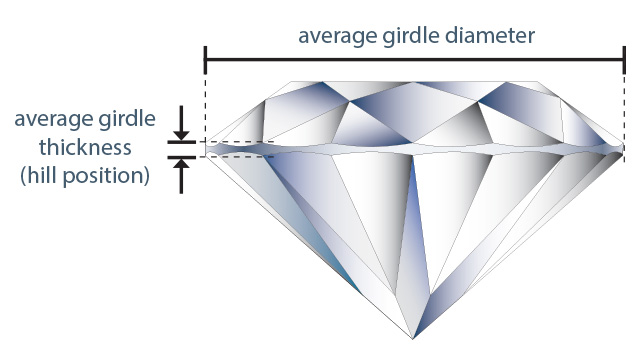
Girdle Thickness Description
Girdle thickness is visually assessed at the "valley" positions, as a range between the thinnest (minimum) and the thickest (maximum) areas. Valley positions are the "thin places" located between the bezel/main intersection and where the upper and lower halves meet.
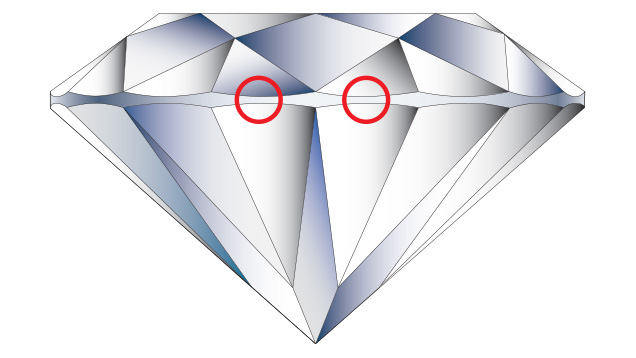
Descriptions of girdle thickness include extremely thin, very thin, thin, medium, slightly thick, thick, very thick, and extremely thick.
Thinner girdles can affect the diamond’s durability, whereas thicker girdles can hide unnecessary weight. The cut grade can be lowered in both of these cases.
Brillianteering or Girdle Thickness Variation
When the angles and positions between the upper- and lower-half facets are normal in relation to the bezel and main facets, the facet junctions are distinct and the girdle is evenly scalloped.
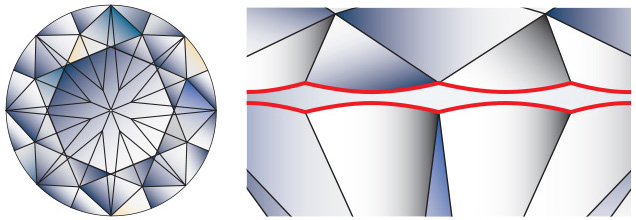
Painting
Painting refers to the tilting of the upper- or lower-half facets toward the bezel or main, resulting in thinner “hill” positions where the bezel and main facets meet. The angle of the upper- or lower-half facets is reduced, becoming close to the angle of the bezels or mains, and blurring the visual distinction between them.
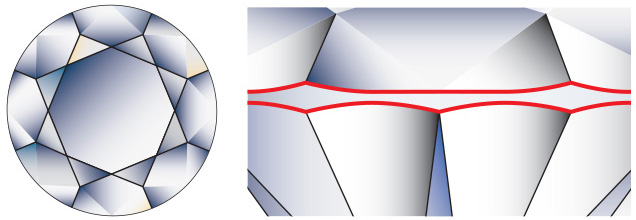
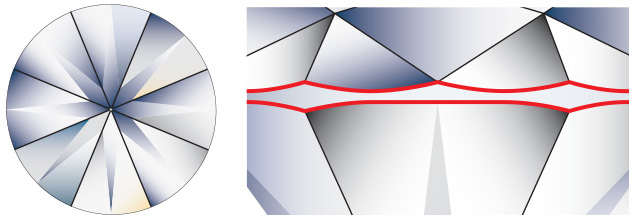
Digging Out
Digging out is the opposite of painting. The upper- or lower-half facets, or both, are tilted away from the bezel or pavilion facets and toward each other, resulting in thinner “hill” positions where upper- and lower-half facets meet. The angle of the upper- or lower-half facets is increased, and the junction between the half facets becomes visually indistinct.
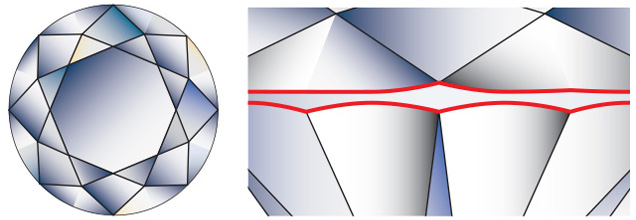
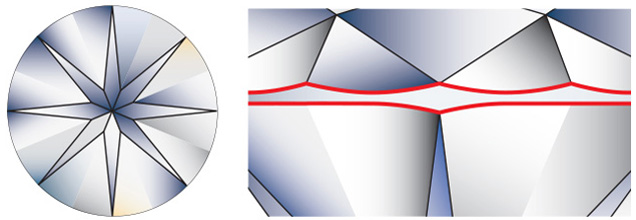
Painting and digging out can occur on a diamond’s crown, pavilion, or both. Both painting and digging out are used to retain weight, and can have an impact on a diamond’s brightness and pattern. As these features become more severe, so do their impact on the cut grade.
Culet Size Description
Culet size is described as the width of the culet facet, when present, relative to a round diamond’s average girdle diameter. Descriptions include none, very small, small, medium, slightly large, large, very large, and extremely large.
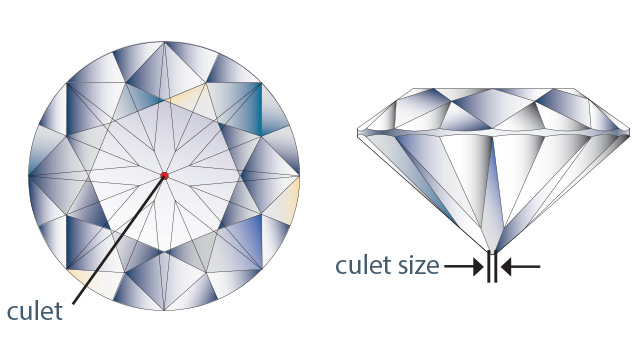
"None" is used when there is no culet facet, which is sometimes referred to by the trade as a “pointed” culet.
Larger culets can have a negative effect on the diamond’s face-up appearance, specifically affecting its pattern, and lowering its cut grade.



